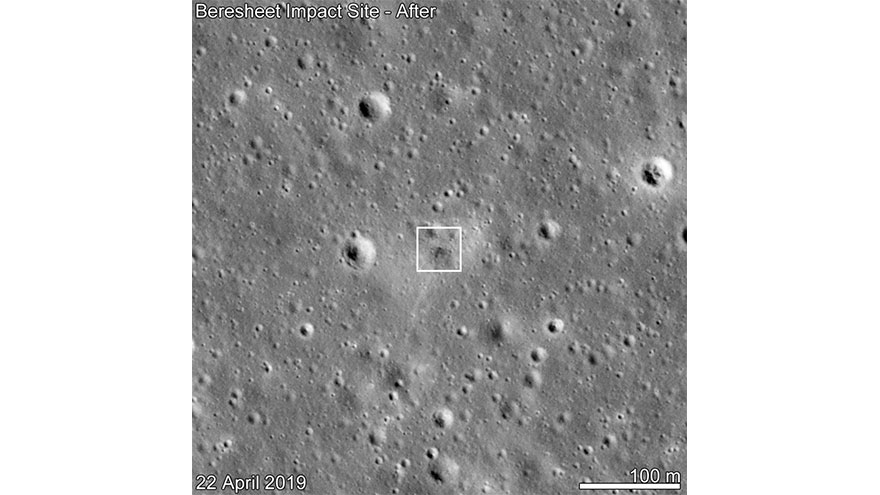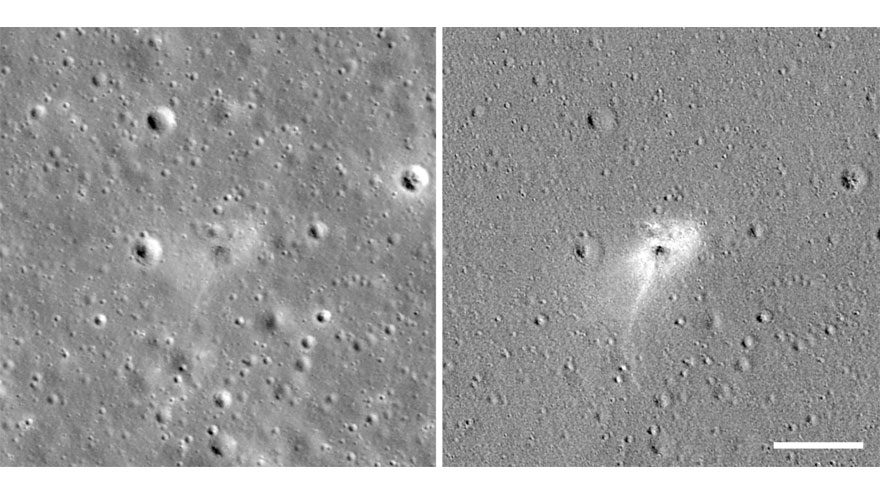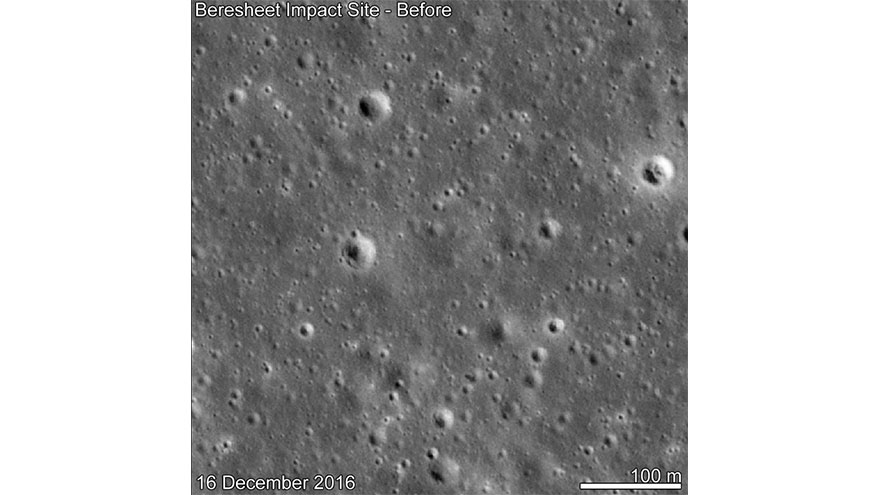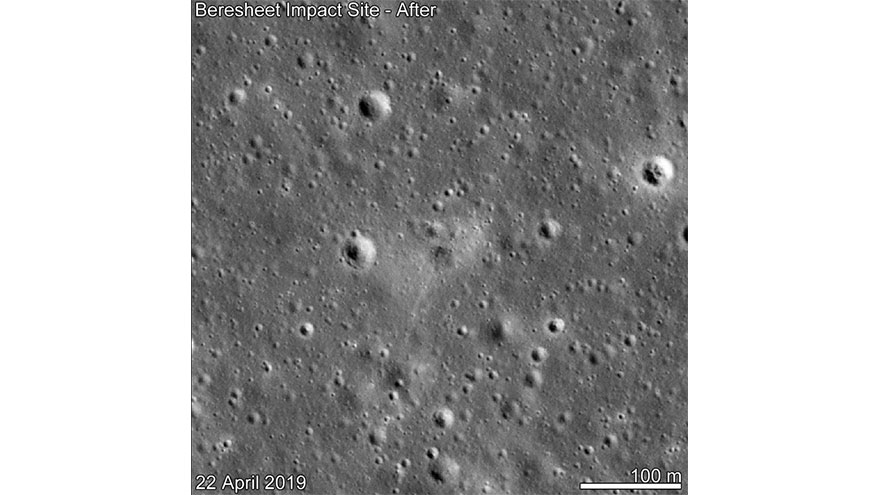NASA releases photos of where Israeli spacecraft crashed into the moon
By Ashley Strickland, CNN
(CNN) -- On April 11, the Israeli Beresheet spacecraft attempted to land on the moon in the ancient volcanic field called the Sea of Serenity -- but it crashed instead. Now, NASA has released images that helped researchers discover the crash site.
NASA's Lunar Reconnaissance Orbiter, which has been orbiting for a decade, passed over the landing site April 22 and took images.
The photos, taken from 56 miles above the surface, feature a telling smudge 32.8 feet wide. There's a halo of lighter, more reflective material around the dark smudge, suggesting that the soil around the landing site smoothed out as it was blown away, the agency said.
It's not known whether the impact created a crater on the lunar surface. If there is one, it isn't visible in the photos, but that could be due to the distance. It's also possible that the impact formed only an indent, rather than a crater, because the spacecraft was lightweight and had a low velocity and a low approach angle, compared with a dense meteoroid of similar size.
The moon is impacted by material from space all the time, leaving craters behind. When the orbiter passes over the area again Sunday, it will record more images to look for a crater.
Beresheet was privately funded by nonprofit SpaceIL. Things went well during the descent, but then officials on Earth lost contact with the spacecraft.
After the crash, the company behind the $100 million spacecraft said its engineers believe that a technical glitch caused the main engine to shut down and later "made it impossible to slow the spacecraft's descent."
The spacecraft's first technical issue occurred at 14 kilometers (about 8.7 miles) above the moon, SpaceIL officials said. Beresheet then lost communications with the control room in Israel during the landing sequence.
Engineers were able to restart communications with the spacecraft, but officials said it was too late; it was moving too fast to land properly.
Beresheet was the first privately funded moon mission. Its name was a reference to the first words of the Bible in Hebrew, which translates to "In the beginning."
The spacecraft was launched in February and went on a seven-week journey to reach the moon. It circled the Earth multiple times before being "slingshotted" to the moon, traveling about 4 million miles in the process.
If the Israeli team had been successful, it would have been the first private enterprise to make a controlled moon landing, with the smallest spacecraft and the smallest budget.
The-CNN-Wire™ & © 2019 Cable News Network, Inc., a Time Warner Company. All rights reserved.




